I majored in drama at college and spent the first dozen of my post-college years working in professional theater in New York City, so I have spent a considerable amount of time with William Shakespeare. So I was excited to see the “From Page to Stage” Shakespeare exhibit that going on at the Frick Museum when we visited. The small exhibit had plenty of literary firepower, however, with seven examples of the Bard’s first four folios on display.
“Folio” is a printer’s term that derives from the number of times a printed page is folded before it is stitched into a book. A “folio” is folded just once, resulting in four printed pages from one double-side sheet of paper. Seven years after his death, two of Shakespeare’s colleagues produced a collection of thirty-six of the playwright’s works, many for the first time or with what is today considered the most reliable texts. Around 750 copies of the 900-page book were produced, but only 235 are known to remain today–82 of which are owned by the Folger Shakespeare Library in Washington, D.C. (When we visited Washington in 2022 the Library was closed, disappointingly.) The collection of plays was ultimately updated and reprinted, and those editions are known as the Second, Third, and Fourth Folios.
The Carnegie Mellon University Libraries’ Special Collections include seven Folios — one of the First and two each of the Second, Third, and Fourth. The Frick exhibit included all seven copies, making for a rare opportunity to see all four Folios at the same time. While many of Shakespeare’s plays had been published in single editions prior to the First Folio, the collected works helped ensure that his legacy would be maintained.
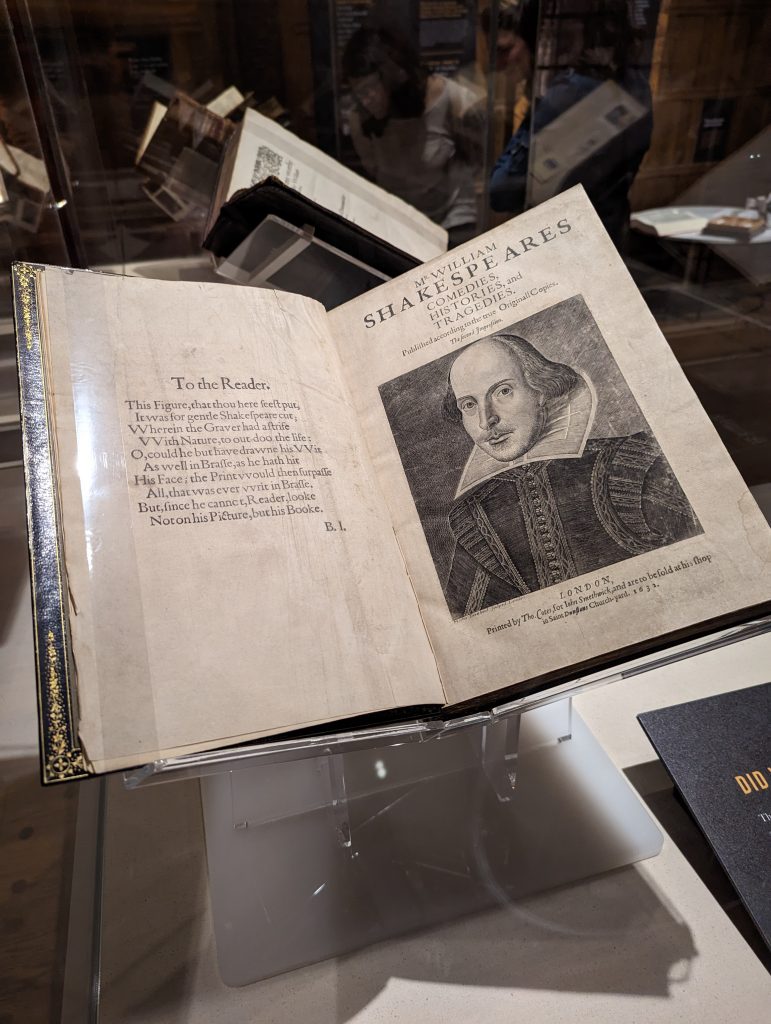
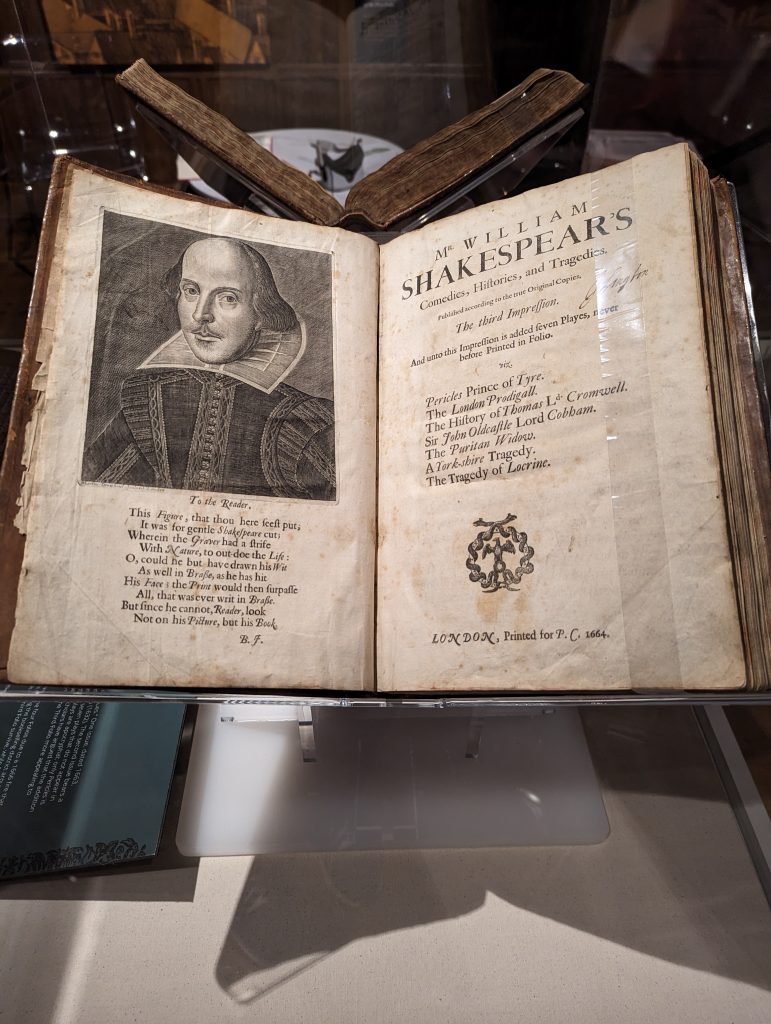
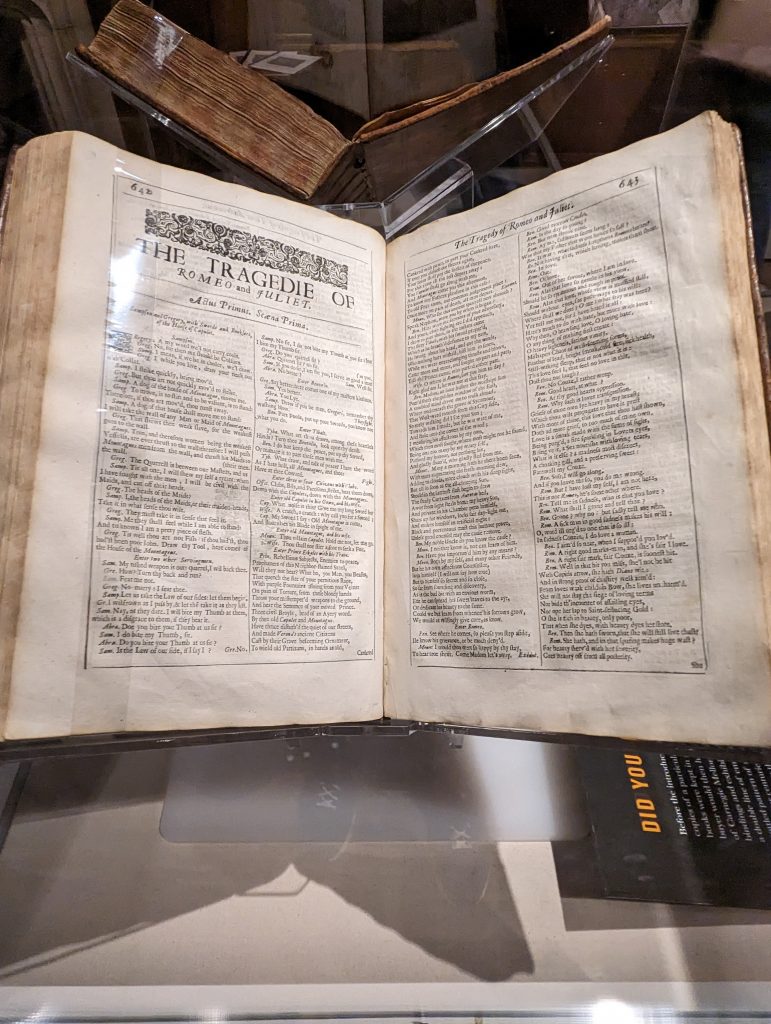
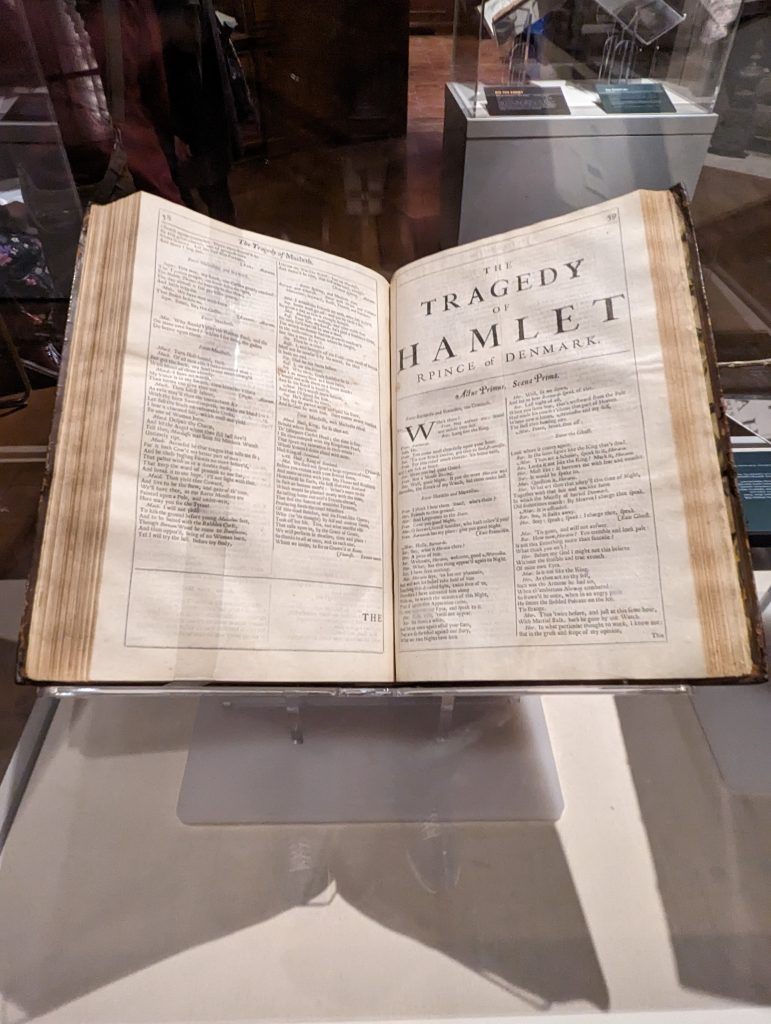
After visiting the Frick, I noticed references to Shakespeare in several other places in Pittsburgh. For instance, in the Andy Warhol Museum, I spotted the early illustration from Andy’s days as a commercial illustrator shown at the top of this page, “To Shoe or Not to Shoe.”
Then, in the Carnegie Museum of Art, I spotted this 1900 painting by Edwin Austin Abbey, “The Penance of Eleanor, Duchess of Gloucester,” a scene from Shakespeare’s Henry VI, Part II; Act 2, Scene 4. The museum describes the subject of the painting thus:
“Eleanor, having vainly urged her husband to usurp the throne, has committed treason by consulting sorcerers about the length of the king’s life. For this crime, she has been condemned to walk barefoot through the streets of London for three days. Here she turns to address her husband: ‘Come you, my lord, to see my open shame? Now thou dost penance too. Look how they gaze! See how the giddy multitude do point, And nod their heads, and throw their eyes on thee!’ The eerie mood and internal anguish of the characters are typical of Edwin Austin Abbey’s Shakespearian scenes.”
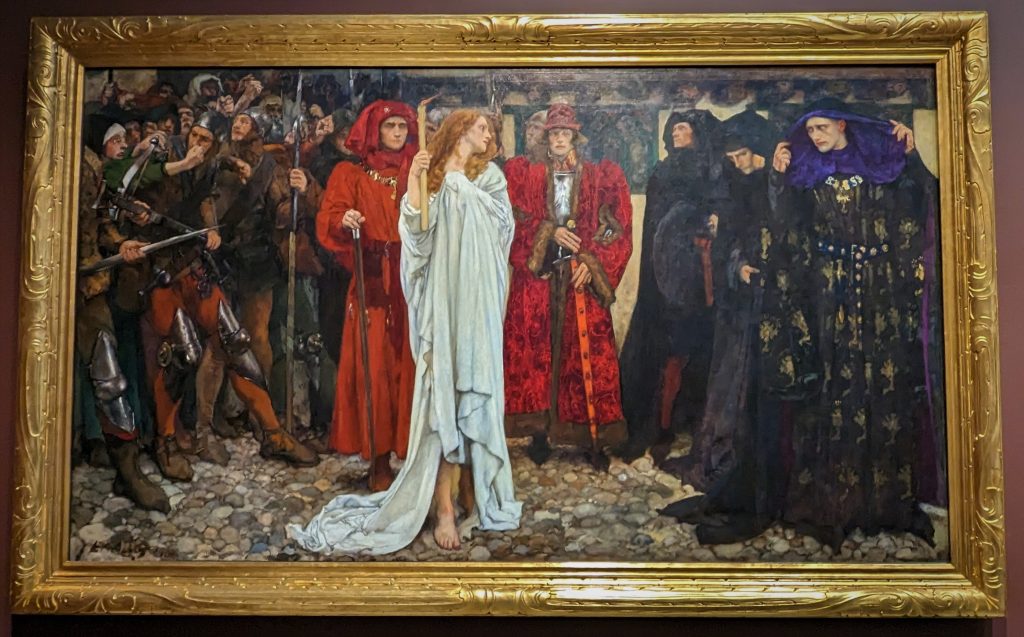
Nearby Austin’s painting is an 1822 bronze sculpture, “Henry IV as a Child” by François Bosio. The adult Henry IV was the subject of two plays by Shakespeare, Henry IV, Part 1 and Henry IV, Part 2. Together these tell the story of the royal’s life from the battle at Homildon Hill late in 1402, to his victory in the Battle of Shrewsbury in 1403, and then the journey of his son, Prince Hal (who becomes Henry V). Part 2 introduces the enormously popular character of Falstaff. The Carnegie Museum describes this work as the start of:
“a new genre of 19th-century royal portraiture in which the heir to the throne is depicted as an icon of a nation’s future. Henri IV (1553-1610) became the first Bourbon king of France in 1589. The nine-year-old Renaissance prince poses as a youthful warrior representing the newly established Bourbon state. Henri’s childish body, with large head and narrow shoulders, contrasts poignantly with his assured, martial stance, hand on sword hilt. His elevation on a specially designed pedestal… provocatively reverses the customary adult/child power relationship.”
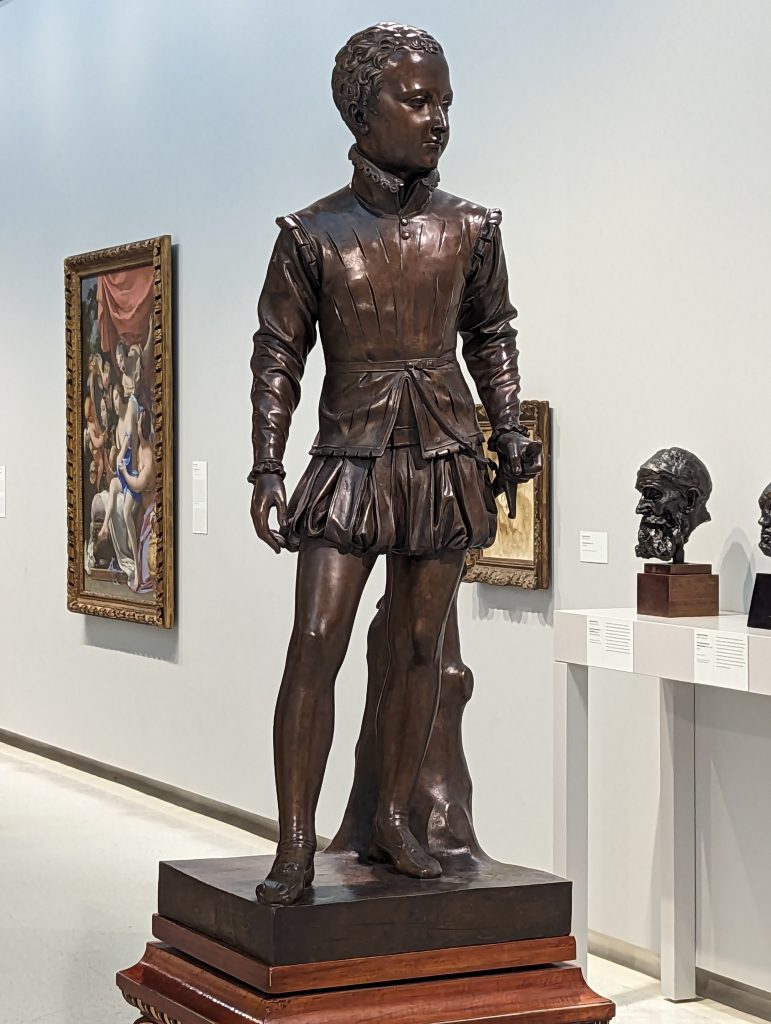
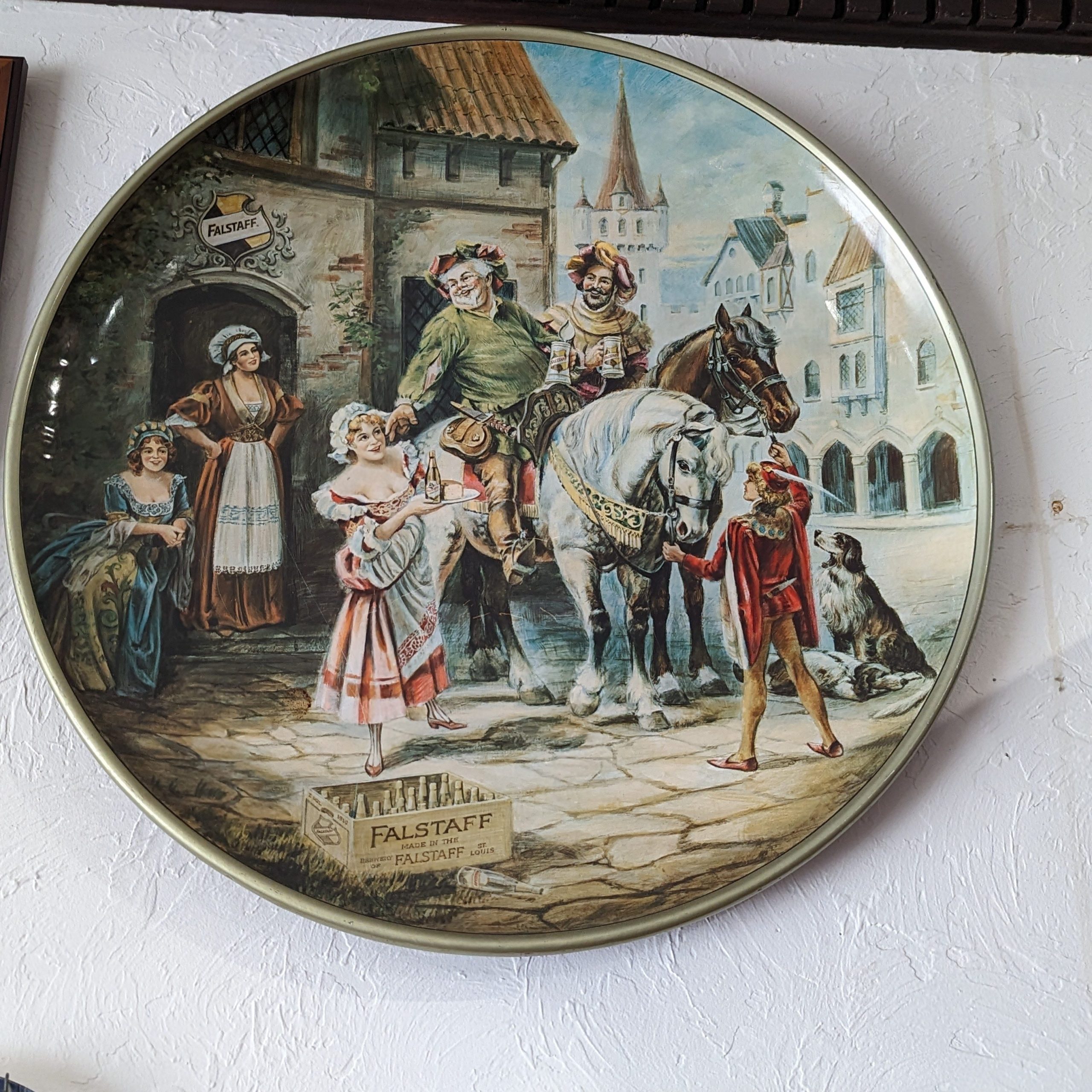
At the Bayernhof Museum, I spotted this platter amongst all of the other German memorabilia and design elements.
It depicts Falstaff, who appears in three of Shakespeare’s plays and is referenced in a fourth, on an advertising plate for Falstaff Beer. The Falstaff Brewing Company eventually shut down in 2005.
Finally, outside the Carnegie Music Hall, next to the Carnegie Museums of Art and Natural History, this oversized sculpture of William Shakespeare stands watch.
He is joined by Bach on the other side of the steps. Just down the street, at the entrance to the art and natural history museums, are statues of Michelangelo and Galileo. The four figures thus represent literature, music, art, and science.
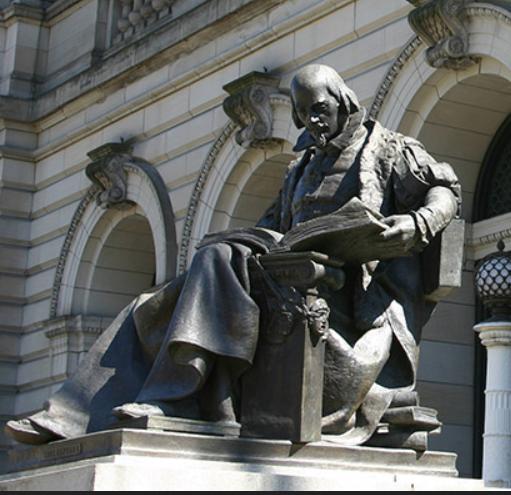
Shakespeare’s influence on language and culture is enormous. You never know when you might run into him!




